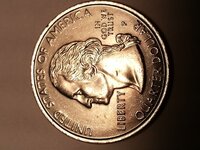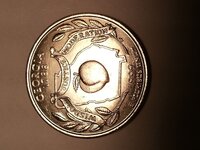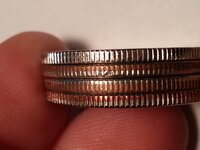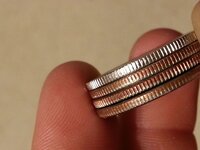ResurrectedVirginia
Full Member
I found this on the beach in Miami on vacation. It's exactly like a normal quarter except the side or reading. If you notice the color is all silver/gray. Every quarter I have ever held is 2 colored, silver/grey and copper unless it is silver. This coin is obviously very different from regular quarters. It is a 1999 P Georgia it is the same size, thickness, diameter, design, etc. EXCEPT FOR THE COLOR. I weighed it and found it to be 5.5 grams on my scale. Very close to a clad quarters weight. I don't think it is silver because it would've weighed a little more and P mint did not make silver proofs as far as I know. Let me know what you think.
The coin is far right in the stack. "The solid colored one.



 "
"
The coin is far right in the stack. "The solid colored one.



 "
"




